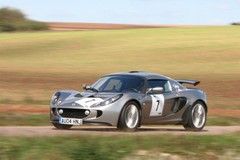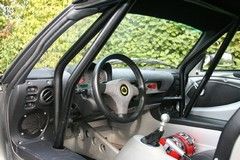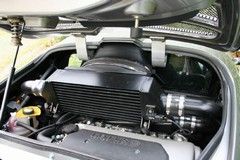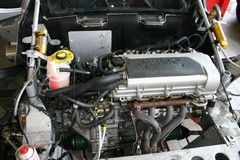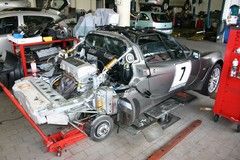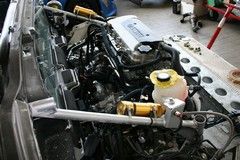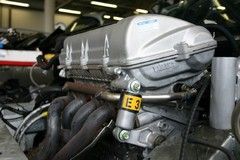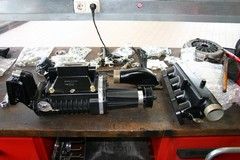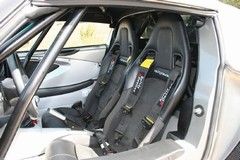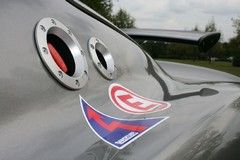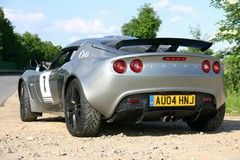Supercharged Lotus Exige
If you had to choose between a Lotus Exige and the Cup 240, which would it be? Sebastian Geisler checks them out
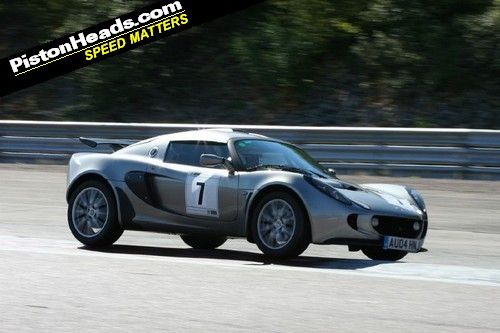
Lotus Exige Cup 240
When Lotus announced the Exige S2 for the first time in September 2003, the mission of the S2 was to be more comfortable so people could use the car as their daily driver -- you can drive it to the office and on the track. With two optional packages (touring pack or performance pack) you can customise the car, with even air conditioning as an option. There are now quite a few variants on the theme too. New is the supercharged Cup 240, added to the Cup Exige and the Sport Exige 240R, just to add even more choice.
In contrast, the first Exige was a different animal. It was only built in limited numbers -- about 600 cars -- to offer drivers a road-legal version of the Motorsport Elise. It's very fast on the track, but not really suitable for everyday driving.
Racing heritage
The S2 changed that. It was unveiled at the Geneva Motor Show in March 2004, at same time the Exige S2 Cup car, which was specially developed for the Lotus Cup Europe, and which Lotus describes as "a road registered race car straight out of the box".
The race series has just finished its second season of regularity events and its first season of standard races, and continues next year. It's rumoured that the system of the races based on regularity and the race rating will be confirmed. The timetable's likely to consist of about nine weekends on circuits, most of them current or former F1 tracks, in Belgium, France, Germany, Italy, the Netherlands and, for the first time, the UK.
Both the Exige and the Exige Cup car are built on the same production line at Lotus' plant at Hethel with only minor modifications. The difference is that the Cup car takes an extra three weeks to be assembled and modified at the Lotus Sport plant. That's reflected in the price, as the Cup car is some £7,000 more expensive than the standard Exige and only available at one of the nine official Lotus Cup dealers.
Exige Cup
The following points differentiate the Cup version from the standard Exige:
- Six-point FIA safety cage
- Sport seats
- Four-point seat belt
- Electrically operated fire-extinguishing system
- Battery isolation switches inside and out
- Oil sump monitoring system
- Adjustable front stabiliser
- Two-way adjustable shock absorbers
- Limited slip differential
- Strengthened clutch plate and cover
- Aluminium rims in silver
- A Lotus Sport Division production plate.
Sport Exige 240R
The Cup Exige isn't a limited edition -- it's only limited by the capacity at Lotus Sport and in the last 18 months, the division has produced some 55 cars. And this year, Lotus unveiled the first supercharged Exige at the Geneva Motor Show: the Sport Exige 240R -- a 50-car limited edition that sold out within three weeks.
Due to the development costs involved, it was rumoured that Lotus will make the supercharger available as an option other Lotus cars, although it's been available from Lotus Motorsport exclusively to the Exige Cup cars since July. Assembled in the Lotus Sport plant Hethel or at one of the European Lotus Cup dealers, the supercharged 240 will develop 243bhp instead of the current 189bhp from its Lotus-modded Toyota engine.
About 30 hours are needed to fit the supercharger. The kit contains 151 parts in total, including the Eaton supercharger itself, intercooler, modified engine management system, new grille for the air intake on the hard top, new catalytic converter and many other small bits and things like gaskets, bolts, tubes and screws.
To fit it, the rear clamshell, hard top, exhaust and many other small parts must be removed. But, unlike a turbo, a supercharger can be built around the engine, so it's not necessary to open the engine. The intercooler will be fitted on the engine, which is why it's not possible to fit this kit without modifications in the Elise 111R, although the design of the Circuit Car, unveiled at Shelsley Walsh this summer, shows that it's possible to fit the cooler in a different place.
The supercharger kit including fitting costs about £8,700.
Driving the cars
We got hold of a new Cup 240 to see what it adds to the range. Entering the Cup 240 car is more difficult than the standard car due to the roll cage: if you're going to wear a helmet in the car you have to be under six feet tall. If you prefer to drive it without a roll cage, the cage can be removed in an hour but both cars fit like race cars: the interior is small, but not too small and you immediately get the impression that you are as one with the car.
Fasten your three-point seatbelts in the Exige and the four-point belts in the Cup 240 and look in the mirrors. The rear view from the standard car was already restricted, but in the supercharged Exige you see nothing but the intercooler.
You can feel the difference between the two cars as soon as you start the engines. Their characteristics are completely different, the sound of the supercharged cup car being much deeper and throaty. And full power in the Cup 240 feels like sitting in a jet at take-off.
In the standard Exige, the cam profile changes at 6,200rpm, the rush is similar to someone pushing a button of a nitrous oxide-boosted engine. With the modified engine management system, the cam profile of the supercharged Exige 240 changes at 4,000rpm, but the effect is less spectacular than in the standard Exige.
The only problem -- if problem it is -- is that you simply can't drive the supercharged car slowly. The sound of the supercharger alone is seriously addictive. So if you want to drive the standard Exige fast, when you're following the supercharged Exige 240 you have to change gear much more often, especially at speeds over 60mph -- and of course the supercharged car reacts much faster than the standard.
The standard Exige offers a non-adjustable suspension from Bilstein, while the Cup 240 has an adjustable Öhlins suspension. The Cup 240 feels glued to the track due to the Yokohama semi-slick A048s, providing tremendous cornering ability. On the road, on the other hand, the Cup 240's suspension feels more sensitive than the Bilstein dampers of the standard Exige, especially on the German autobahn at high speed, due to lorry-carved ruts.
The steering in both cars is similarly direct and offers a real go-kart feeling. The brakes are easy to handle and offer superb retardation, with no fade after several hard stops. On the car we tested, the Cup car had optional stainless steel brake lines and sport brake pads, which still improve the efficiency of the brakes, but the ABS kicks in more often.
Performance
With the Cup 240 we didn't manage to accelerate to 60 mph in under five seconds, whereas Lotus claims 4.5 seconds. The standard Exige should achieve this in 5.2 seconds -- we measured 5.5 seconds. We also compared the speedos on both cars with a highly accurate GPS-derived measurement and found that the speedos on both cars over-read by between 5-8 mph at 150mph, which is not a bad margin of accuracy.
Which to choose?
So which car do I prefer? For the road, the standard Exige is the one for me: the power is more than enough for daily use and it offers more comfort. The Cup 240 is the perfect toy for the track -- on the road I would lose my driving licence within days...
shangani said:
Great looking car - good power. However the issue of not being able to wear a helmet in the car if you are over 6 foot sounds limiting. I am just over 6 foot, but have a long torso and sit high in the car anyway. I was seriously considering ordering one, but will have to see if I fit in it. Also surprisingly the performance figures aren't that great. A honda exige even N/A should better that. The honda powered S2 I drove recently with a JDM engine was nearer 4 seconds to 60.
Yep, the 0 to 60 is a bit of a disapointment, and I don't understand that...
Indeed a honda powerd elise with 220hp is faster to 60 or is it? does anyone has some real times(0 to 60 and 0 to 100) of some fast elise/exige's? also with honda and other engine's so real times not assumed times, I'm all ears

GTRene
gooby said:
Hold on - slow down. Did I read Supercharger kit that can be fitted to 111R with some mods?
And xmas so close!
Ameyc - How much?
around 8.000,-gbp I guess fitted...
sorry, its 8.700,-gbp fitted in an exige,according to the story, so when you already have the toyota engine in it its an option, or...sell the toyota engine and put a Honda engine in it maybe with a supercharger on it or a 280hp 2.3 duratec engine and "save" some money
GTRene
>> Edited by GTRene on Wednesday 30th November 16:30
bogie said:
the difference is due to weight...most Honda cars are 800Kg ish or less with 220bhp...the 240R is over 900Kg...think a top spec S2 Exige is 960Kg !
Yep you're right, I saw that too in many articles, so maybe one of the best things is an early S2 car with K-honda engine and a supercharger at around 300hp and 800kg that way you get a nice power to weight ratio...
Exige 240R = 960kg and with 240hp thats around 4.0kg per HP
Elise type-R = 800kg and with 220hp thats around 3.6kg per HP
Elise type-RSC= 800kg and with 300hp thats just 2.6kg per HP
René
But Lotus Exige Cup 240 sounds realy cool
 but so does RSC
but so does RSC
>> Edited by GTRene on Wednesday 30th November 17:59
bogie said:
marketing bull*shit - thats why...I dont any magazine has ever really achieved their claimed figures..and of course in real life, with mechanical sympathy, you wont get anywhere near im afraid
I guess also mostly marketing(maybe one car managed it?)thats the same with the car I have on the moment its 5.2? in the books by BMW but 4.3 by EVO measures but this time its up side down marketing, because they does not wanted the Z3 M coupe end better then an M3 but that car is much heavier...! they even gave the M coupe less rpm(7.400rpm), about 500 less!(and a lot of power from this engine is too, in that part) but mines got the later chip so It can do 7.900rpm and I drove both and competed against a few, I won easely they could not believe when they saw it hapen

GTRene
>> Edited by GTRene on Wednesday 30th November 21:33
>> Edited by GTRene on Wednesday 30th November 21:34
peter450 said:
i think autocar have done 4.8 in a 111r in one of there tests, lotus average the runs so i've no doubt the figures are do able but these are ideal conditions with no clutch sympathy whats so ever, its also down to how quick the driver can get off the mark, temperature etc thats y you get different stats from different mags to many variables for it to be a consistant figure, I remeber an article on a ferrari 360 they couldn't get the 60 time under 5 and this was the challange stradale version, no doubt it can do it but on the day under the conditions tested they could'nt.
and thats the problem people see these figures an think thats hwat there gonna make from the traffic lights, the 30 to 70 through the gears is proabbly the best real world indicator shame its not widely used
I agree with a new standard sprint put into all tests! not only 0 to 60 but also always the 30 to 70! and a 1/4 mile time
 that is also much better for tires and engine mounts! and give's a better view at his torque powerrrr
that is also much better for tires and engine mounts! and give's a better view at his torque powerrrr GTRene
Hendry said:
Surprised to find this whole thread rating the differences between the various flavours of Lotus based on their 0-60 time. What baring does that give? In any circumstance the 0-60 means virtually nothing, but when have Lotuses ever been about speed off the line over poise, agility and balance? Particularly off to read about a track-day biased car like the Exige, as what is the one thing you never do on a trackday? A standing start...
Would expected to have been reading here about the differences the engines make to drivability and weight transfer, predictability etc. This has ended up reading like a game of Top Trumps.
Still, your thread....
Never do a standing start on the track? when you are "racing" in competition you do a standing start and then its very importand to get to the first corner first! and also the "power" of acceleration out the corner is importand, and when you've got a spin, every second counts then!
And even not on the track its big fun at the stoplights doing a sprint with someone else, and loosing its no fun, but winning is

So you can drive in the back of the field (with same driver scils and experience) and the other drives a few seconds faster each round with a more powerful car that can accelerate faster...so 0 to 60 and especialy 30 to 100 times, can be very importand on the track and on the road...

GTRene
Gassing Station | Elise/Exige/Europa/340R | Top of Page | What's New | My Stuff

